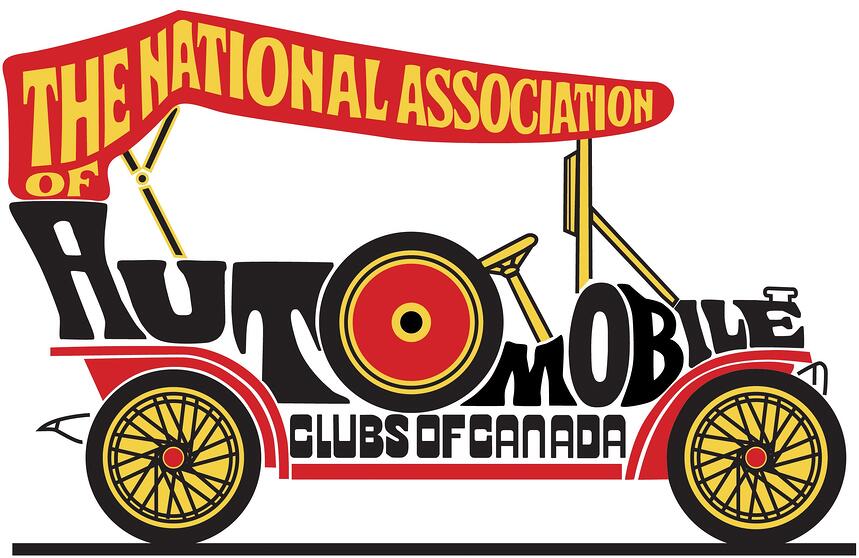As one of the five charter members of the Bonneville 200 MPH Club, Otto Ryssman’s short but full hot rod career has quite rightly gained legendary status.
Otto was born in Milford, Utah, to Bert and Nora Ryssman on September 10, 1929. Luckily, when he was only one, the family moved to Santa Ana, California, where they worked a small farm. Graduating in 1947, Otto made his first trip to the dry lakes with his buddy Edward ‘Tiny’ Conkle who worked at CJ Hart’s Beacon Gas Station and Garage. Tiny owned a ’34 V-8-powered coupe that Otto raced at Rosamond where he turned a respectable 112 mph.
The following year Otto campaigned a ’29 roadster with a Flathead Merc. As a member of the Gasketeers, Otto’s racing career and timing tag collection expanded. The young Otto soon struck up a friendship with legendary cam grinder Chuck Potvin and Otto’s hot rods became the tools for Potvin’s fuel and cam experiments. In his book Merchants of Speed, Paul Smith tells of Otto apparently heating dynamite in order to extract the nitroglycerine and then combine it with alcohol for racing fuel. While Otto’s success on the lakes was due to his ingenuity and determination, he friendships with the likes of Potvin, Earl Evans, Vic Edelbrock Sr. and the young and brilliant Chet Herbert accelerated his learning curve in a few short years.
When CJ Hart started the Santa Ana drags in 1950, Otto and Tiny began racing a ’31 Model A Coupe and Otto was good at it, however, the boys soon began to experiment with dragster design. While many people believe Dick Kraft’s ‘The Bug’ was the first ‘rail job’, records indicate that Otto and Tiny were probably the first to invent the ‘slingshot’. As Otto noted in Ed Almquist’s book Hot Rod Pioneers: “We installed the engine rearward with a one-foot drive shaft to get more weight onto the rear wheels for stability. Everywhere we’d go, we’d set a record. And their dragster would indeed leap the line like a slingshot to many a victory. It really should be considered the first slingshot because it had a longer wheelbase than Kraft’s ‘Bug’.” His quarter mile time at Santa Ana was 10.00 flat with a rolling start, which was common practice then.
On December 2, 1951, racing his 296 ci Merc’-powered slingshot at the San Diego Timing Association’s meet at Paradise Mesa, Otto went 119 mph. In the March 1952 issue of Hop Up, there’s a great shot of Otto taking off and the copy says he set a new ¼-mile record at 12.18 seconds. Unfortunately, the caption with a static shot of the car says, “Ryssman’s rocket was built strictly for accelerating and not for beauty.” The cars is actually looking a lot better in ’51 than it did in ’50 as it now had a grille and hood.
A few months later, in the May 1952 issue of Hop Up, there’ s a two-page feature on the car. Even then they take a dig at him as the first paragraph of the story says, “This gem may not look like much… but it sure goes.” The story went on to talk about a new belly tank 22-year-old Otto was building. It said he worked as a foreman at the Bridgeford Meat Packing Company in Fullerton, California.
Otto was equally at home on the Bonneville Salt Flats as he was the drag strips of Southern California. In 1952, he was piloting a flathead-powered Class B Streamliner at El Mirage where he set a new class record of 162.16 mph. The ‘Post Special’ was owned by Harold ‘Shorty’ Post and Doug Hartelt who worked at Post’s body shop. The team followed that up by taking the car to Bonneville where Otto set a new Class C Streamliner record at 217.65 mph—the car now being powered by an injected Chrysler Hemi.
The following year, the ’liner was campaigned by Hartelt and Chuck Potvin, however, they left Post’s name on the side. At El Mirage, Otto went 203 becoming the first to break the 200 mph mark at a Russetta meet. Later that year, at Bonneville, Otto bumped his speed to 222.65 mph and thus became a founding member of the 200 MPH Club. He was less fortunate driving it in 1954. Now sponsored by Sandy Belond and renamed the ‘Belond Equa-Flow Exhaust Special,’ the streamliner’s right rear tire blew exiting the traps and the car rolled at 224 mph. Luckily, Otto escaped with a cut leg and concussion.
While at the top of his game both at Bonneville and the drags, tragedy struck on July 26, 1955, while racing at Santa Ana, his clutch exploded killing a spectator. Otto was only slightly injured but the resulting lawsuit went on for seven years and though finally dropped it drained Otto financially and emotionally and effectively ended his hot rodding career.
While he continued his career as a truck driver for 40 more years, Otto never forgot his hot rodding roots. For many years Otto made the pilgrimage from his home in Arizona to El Mirage, living vicariously through the next generation of speed demons who all aspire to the legendary status of pioneer Otto Ryssman. He passed away August 20, 2015, in Corona, CA. He was preceded in death by his wife of 61 years, Carol Rae Ryssman on August 19, 2011.

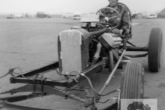

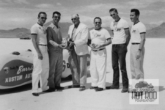
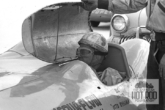

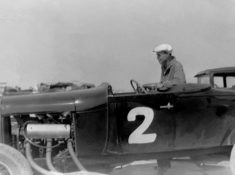 Bill & Tom Spalding
Bill & Tom Spalding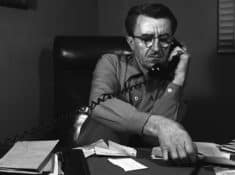 Eddie Edmunds
Eddie Edmunds Barris Brothers
Barris Brothers Vic Edelbrock Jr.
Vic Edelbrock Jr.

